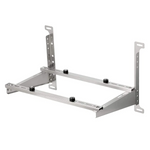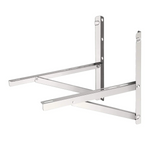Thinking of deep cleaning your mini split this summer?
If your unit isn’t cooling like it used to, dust buildup could be the reason. A proper clean can restore airflow and improve performance—just in time for the hottest months. But keep in mind: deep cleaning involves opening the unit and handling sensitive components. It requires some DIY skill and comfort working around electrical parts. If you’re not confident, it’s best to stick with cleaning the filters or leave the job to a professional.
1. Turn Off the Power
Safety first—always ensure the power is fully disconnected before working on your mini split.
- Disconnect the indoor unit from the outdoor unit, or
- Switch off the circuit breaker that supplies power to the system.
Never clean the unit while it's connected to power.
2. Remove and Clean the Air Filters
This is the most basic and safest cleaning step, and often enough for regular maintenance.
- Open the top panel of the wall-mounted unit.
- Remove the air filters. Some models may have an additional pre-filter covering the blower—remove that too.
- Rinse the filters with clean water only.
- Do not use any chemicals, which could damage the filter material or leave residue.
- Let the filters air dry completely before reinstalling.
3. Access the Internal Components
For a deeper clean:
- Use a screwdriver (or a screw gun for hidden screws) to remove the front cover.
- Gently expose the evaporator coils and blower wheel.
- Keep track of all screws and their locations for easy reassembly later.
4. Use a Cleaning Bag and Low-Pressure Washer
To clean internal components safely:
- Place a mini split cleaning bag (also called a cleaning jacket) around the indoor unit. This will catch all dirty water and debris.
- Use a low-pressure washer or spray bottle to rinse the evaporator coils and blower wheel with clean water only—no chemicals.
- Let the water run until dirt is flushed out and collected in the bag.

5. Reassemble and Test the Unit
- Wipe excess water with a clean, dry cloth or allow components to dry naturally.
- Reinstall the front cover and filters.
- Restore power and run the unit to ensure everything is working correctly.
Additional Tips for Outdoor Unit Cleaning
Keeping the outdoor condenser clean is just as important, especially before summer. Here’s how:
- Clear debris: Regularly inspect the area around the condenser to remove leaves, dirt, or obstructions that might block airflow.
-
Safe rinsing:
Yes, you can rinse the outdoor unit with clean water—but be careful: -
- Use low water pressure (such as from a garden hose or shower nozzle).
- Rinse only the aluminum fins and outer casing—avoid electrical components such as the control box, fan motor, and wiring terminals.
- Turn off the power completely before rinsing.
- Allow the unit to dry completely before switching the power back on.
Cleaning the outdoor unit once or twice a year, especially before peak cooling season, can help your system run more efficiently and last longer.






